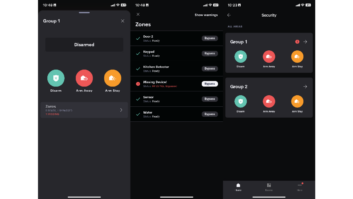
Crestron has described its “revolutionary” cloud based service, XiO Cloud as a “game changer” for the AV industry, insisting it can help to reduce installation times, save money and improve the end user experience when managing their technology.
The XiO Cloud service was soft launched last July and introduced gradually to a series of Crestron products over the past year ahead of an officially launch at InfoComm 2018 earlier this month.
Speaking at the Vegas event, Crestron global director technical services, Richard Sasson, told AVTE that the service is the brain child of a “totally new approach” to the way its customers configure, deploy and maintain its products –looking at the industry more from an IT perspective.

“Previously, every time you wanted to deploy a Crestron system, you’d take it out of the box, set it up either at the shop or job site, load the code, load the firmware and configure all the devices,” said New Jersey based Sasson. “It took time. So, what we identified was that we needed to stop looking at AV as AV and as a technology. When you look at the world of IT and how they deploy systems, they don’t take a box and put it on a desk and load it on a desk and load everything. They push everything out remotely. That was the approach we said we needed to look at, and that’s what we’ve done.”

The benefits provided by XiO Cloud, Sasson explained, can begin for the end user before their Crestron products have even been delivered to their office or work place.
Each compatible connected Crestron product can be configured remotely by an integrator to match their customers’ needs and requirements, with products able to be assigned (by their serial numbers and MAC addresses) to specific rooms.
This, explained Sasson, allows for products to be delivered and fully functional immediately once connected to the customer’s network, making it “easier” for the integrator and speeds up installation – reducing inconvenience for the customer.
All products can then be monitored and managed remotely via a desktop, with each product providing constant feedback, alerting the AV/IT team to any technical issues that may arise, whilst any changes (names, rooms etc.) or updates (firmware, security) can be pushed out individually, collectively or automatically.
“We’ve created a cloud-based service that allows our products to essentially phone home and be identified,” Sasson joked. “You can literally send it to the field, connect it onto the network and have it pre-configured from your desk. If I want to roll out 100 scheduling panels on a floor, I literally have to sit at my dashboard, configure the room names, determine which serial number goes to each specific room, take the unit out of the box, plug it in and it’s configured. I’ve just reduced the time to deploy dramatically. Better yet, once it comes online, it communicates with the dashboard and auto updates as and when it needs.”
Compatibility
Compatible products so far include Crestron’s room conferencing solution Crestron Mercury, its touchscreen TSW control panels (760, 1060 and 560) and its 3-Series Control Systems. Its Avia DSP processors will become cloud compatible shortly, whilst the goal is to have all its Ethernet devices to be cloud compatible.

“It’s a growing list today and will continue to grow as more products come out and we introduce new device,” said Sasson. “The goal is to make more and more devices XIO cloud compatible so you can deploy your entire system from the cloud.
He concluded: “It changes the way systems are deployed and changes the dynamic in which our integrators can successful. Our goal is to make it easier for them to be successful with their customers and to give a better experience for their customers and to do it in a shorter time frame. If we make it easier, and we make it better, we all win.”







